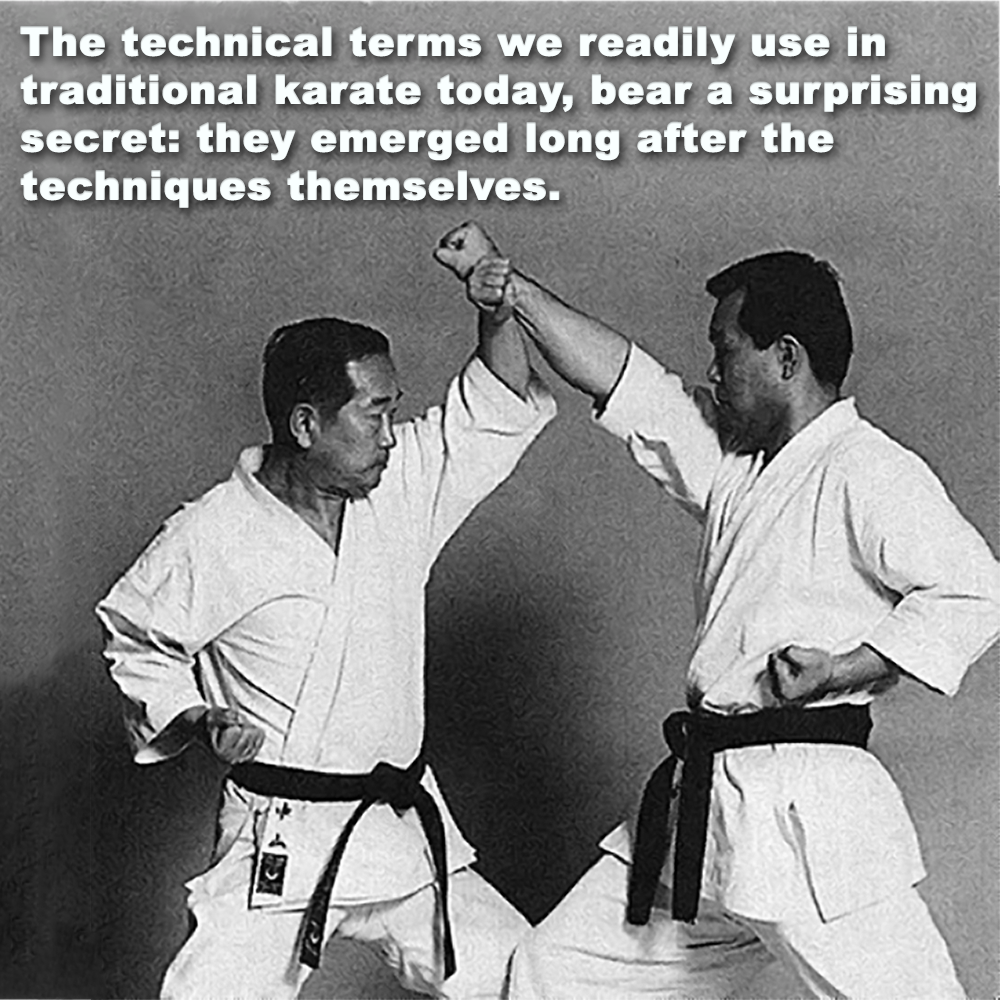
(2 minute read)
The technical terms we readily use in traditional karate today, bear a surprising secret: they emerged long after the techniques themselves.
.
Imagine stepping into an early Okinawan karate dojo. Unlike today’s regimented classes, this environment was very different.
.
The teachers of the time passed down their knowledge to only a handful of students, shaping unique approaches to self-defense.
.
Each technique lacked a formal name, and instructions were relayed verbally, focusing on movement rather than terminology.
.
Sensei Yagi Akihito’s anecdote about “Musubi dachi” perfectly reflects this practice: “Musubi dachi. I had never heard of that. We would just say, stand with your heels together.” – the focus was on the action, not the label.
.
As karate migrated to mainland Japan, in the early part of the 20th century, the need for standardized teaching methods grew. Large classes in universities and schools demanded a common language.
.
Drawing inspiration from established martial arts like Judo and Kendo, new Japanese terms were devised for all of the karate techniques we use today.
.
These labels offered uniformity and clarity, ensuring similar instruction across diverse teaching styles and schools.
.
While technical terms aimed to bridge communication gaps, they introduced a new challenge: interpretation.
.
As Sensei Uema Takeshi points out, the original emphasis on “do this” or “do that” was replaced by specific names, potentially obscuring the true essence of the movements.
.
Old Okinawan concepts which were renamed in to Japanese, have in many cases lost their original meaning.
.
Today, mostly everyone uses the same terms – but they may be interpreted differently, leading to even more confusion, as many instructors have their own way of doing things.
.
It’s important to prioritize comprehension over terminology, and while technical language holds its place, grasping the fundamental principles embedded within each technique, is much more important than simply memorizing vocabulary.
.
If you decide to look past the terminology for a moment, the diversity of interpretations offered by different teachers’ applications and analysis, can illuminate a new facet of a technique, further enriching your overall comprehension.
.
As long as you interpret your new found comprehension in the right context of course.
.
Remember, the true essence of karate is much more than mere words. By diligently understanding the core principles and actively seeking their deeper meaning, you should try to express proficiency through action, rather than simply reciting terminology.
.
Recognizing the historical disconnect between terminology and technique is crucial for accurate understanding and effective practice, especially so when trying to analyze the applications within kata.
.
While technical nomenclature and terminology play a valuable role in instruction, it shouldn’t overshadow the deeper principles and applications of karate.
.
The path to proficiency winds through forests of technique, but only asking “why?” will truly illuminate the way. Ask, learn, grow, and remember, a name is but a label, yet the essence of karate lies in the “why?” that label embodies.
